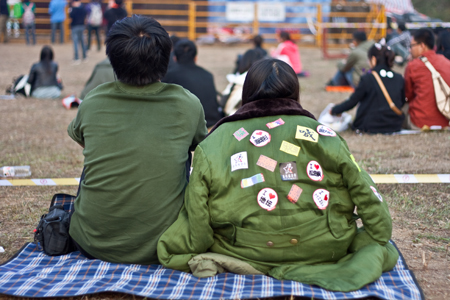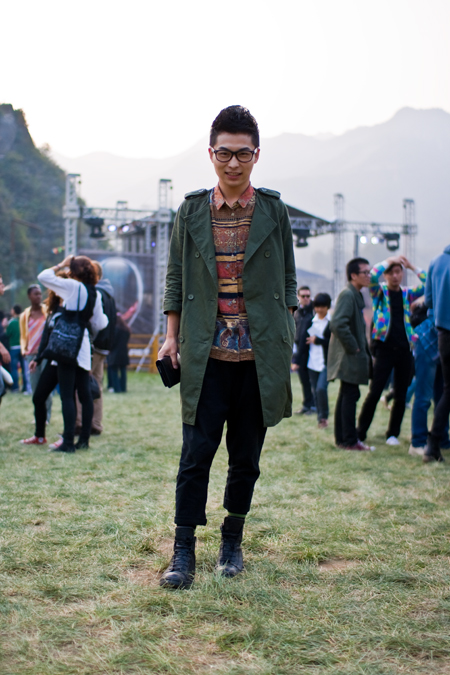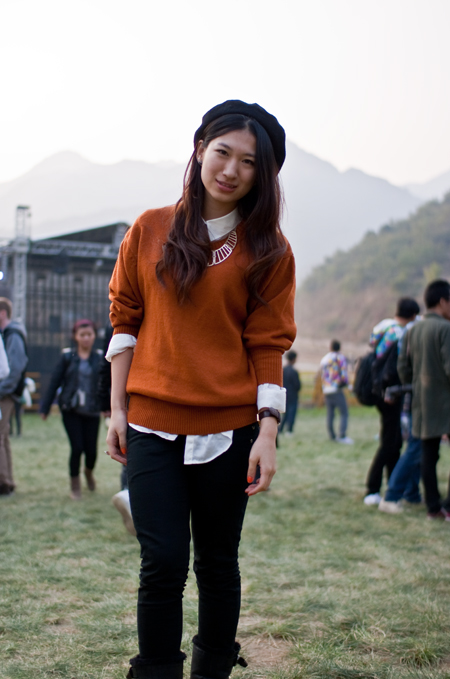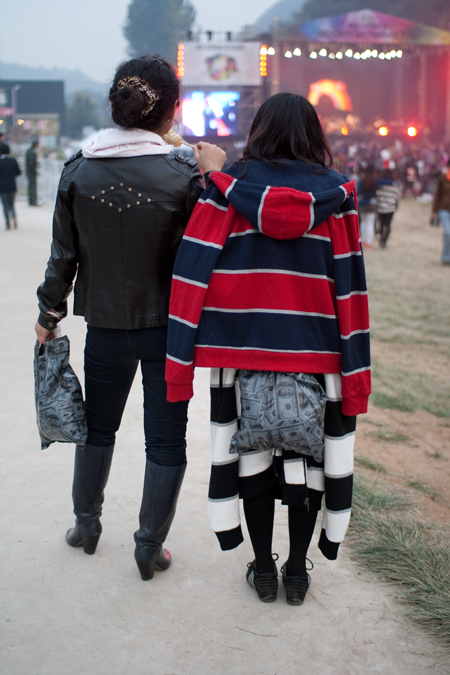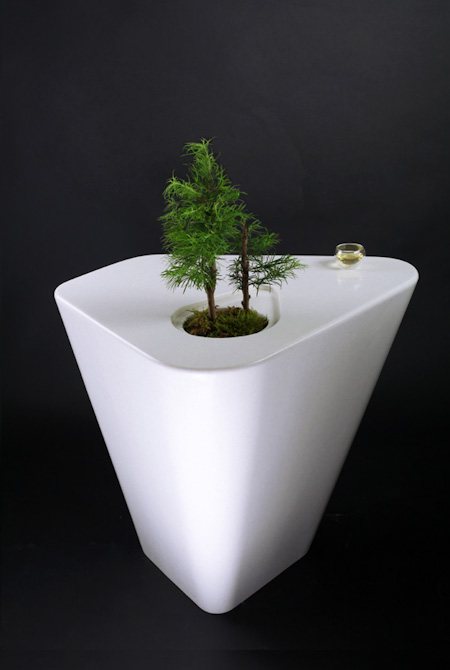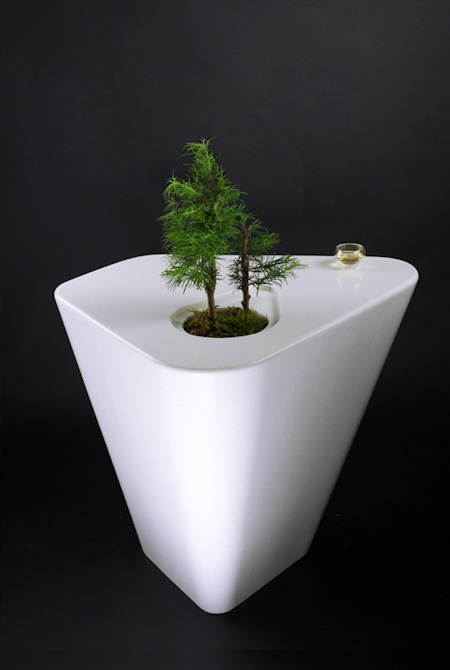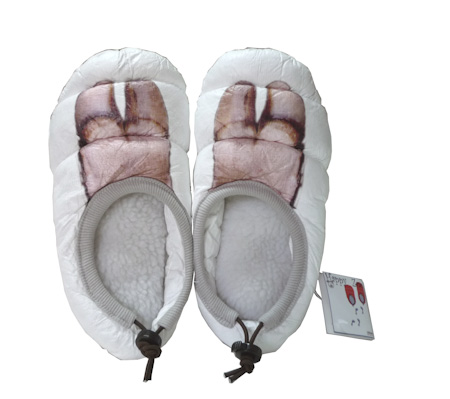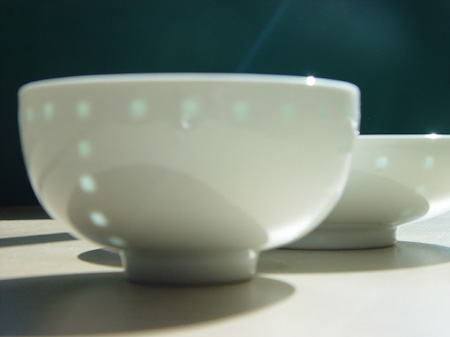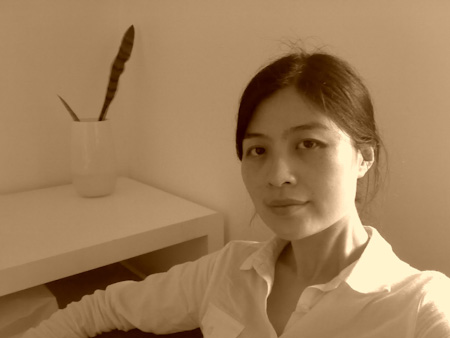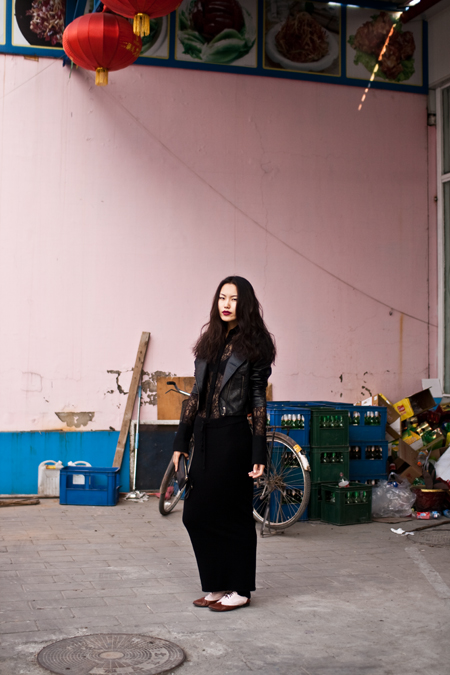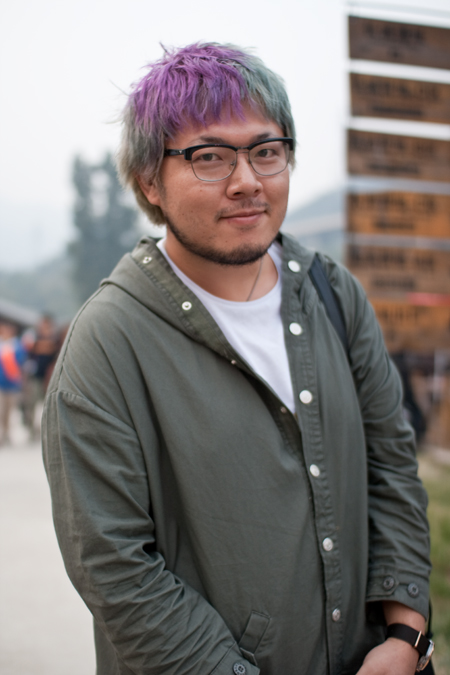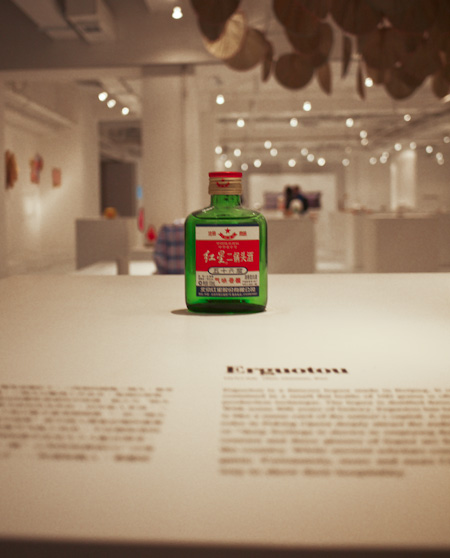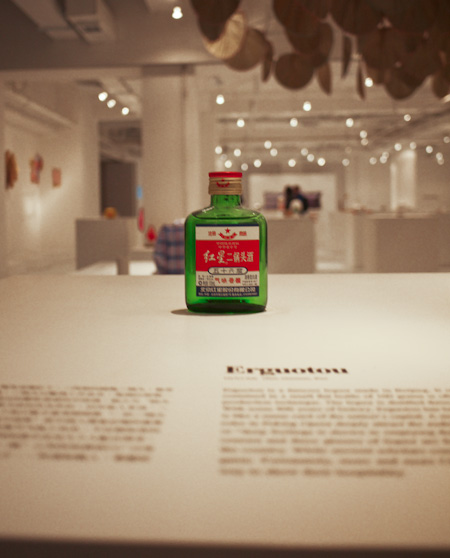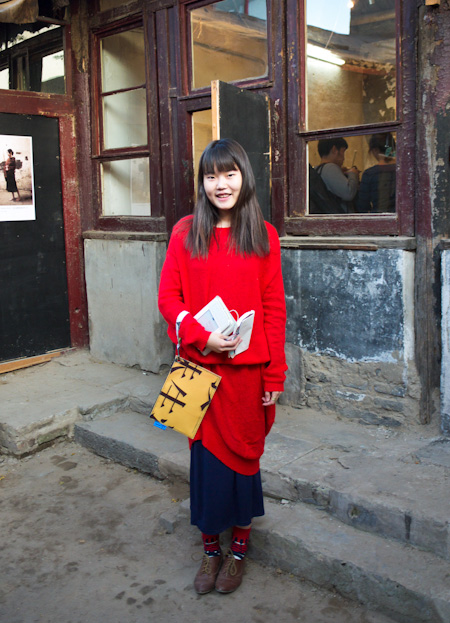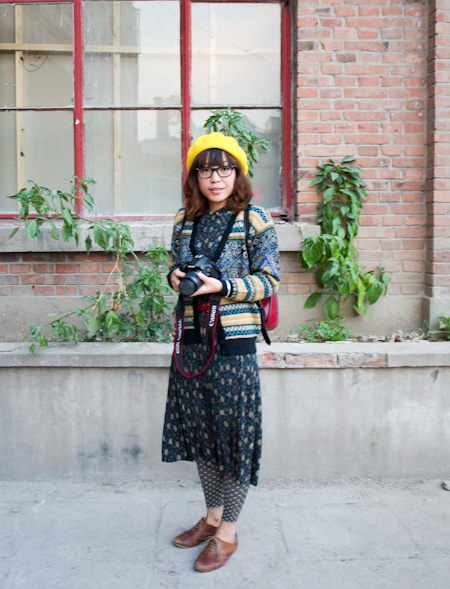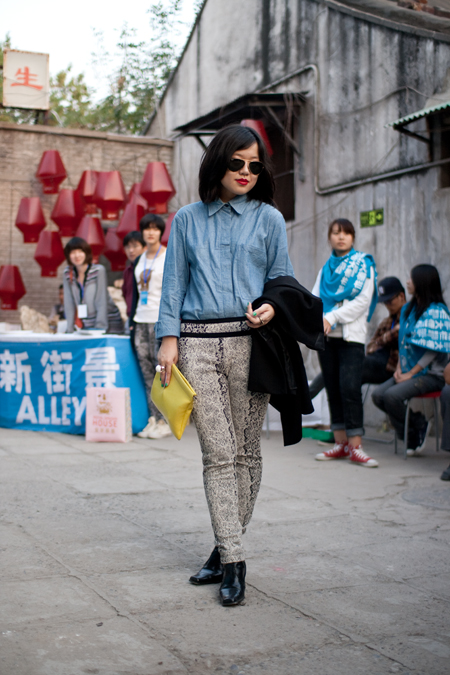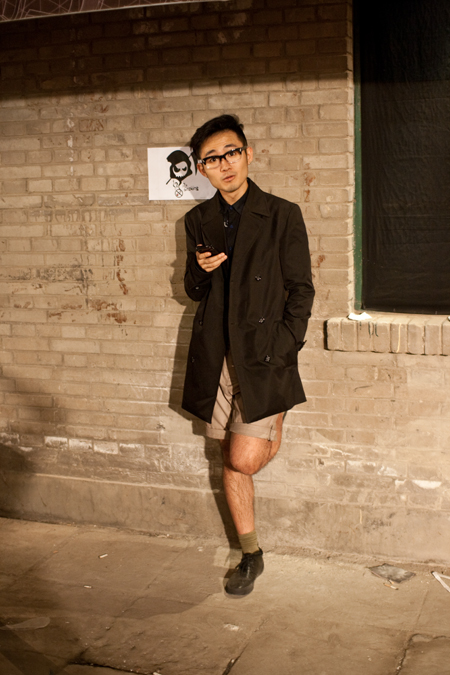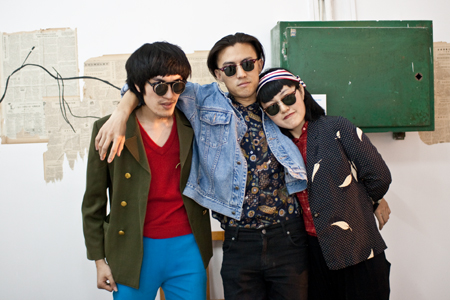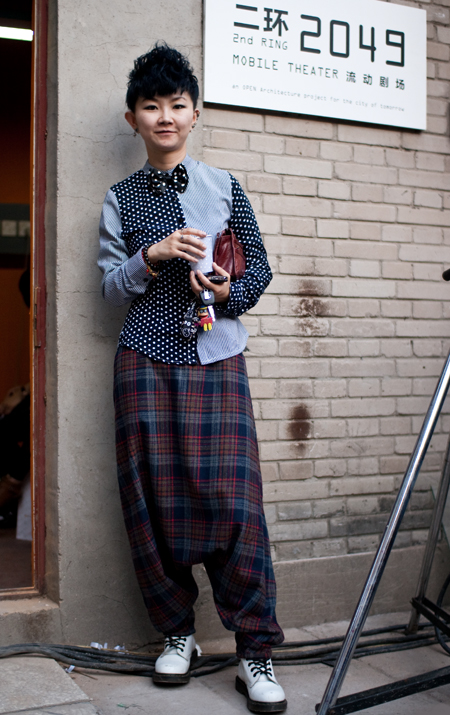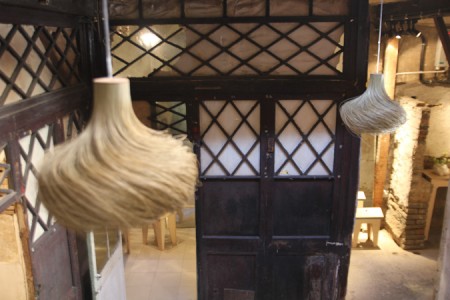Covered with stickers is the typical winter coat for soldiers in Beijing.
Stage Center
The Cloudy Modern Sky
Mses. Moneybags
Product Designer: Huang Ying
An interview that was included in my article “Designing China” in the September 2011 issue of Surface Asia:
1. What is the scale of production for your designs?
My items are all produced on a small-scale aside from the slippers. We make about a few thousand a year.
2. What are the main challenges for you?
Often, our volumes of materials and manufactured items are too low, so producers are reluctant to work with us. Copyright might become another issue.
3. What are the influences on your porcelain-wear?
The translucent spots called “Ling Long” originate in Jingdezhen, China’s traditional porcelain production capital. I altered the rice shape of the “Ling Long” to a square and applied it to a modern bowl. My vases are based on the concept of multi-function and re-combination. They can be separated into different parts.
4. Why did you seek to put landscapes on coffee tables (top photo) and what type of landscapes are they?
In traditional China, the ideal life was living in nature by mountains and water. Houses centered around a garden with stones and plants built on a limited scale to symbolize Nature. Nowadays, we live faraway even from these small gardens. Space is limited especially in such dense cities as Shanghai. My landscape tables have an organic shape and with the help of a gardener Lu Yuxin, who studied miniascape making in Japan, I tried to built quiet environments with the small lichen ball and plant as the symbol of the mountain and forest.
Graduating from the College of Architecture and Urban Planning of Tongji University in 1990, Huang Ying has worked in fashion, interior design and marketing for multinationals. She co-founded home accessory company, Isting, in 2000.
By the Crates
Dye it Yourself
Finally, here are some photos from the Modern Sky festival. Suzy and I both visited the remote, but dramatic venue in the shadow of the Great Wall. Were it only a less hazy day, the location would have been spectacular rather than shrouded.
Many of the styles on display were quite vivid though.
Go See Chinese Stuff!
I’ve used to travel everywhere with a bottle like that.
Beijing Design Week might be over, but Chinese Stuff, a compendium of quintessentially local objects that designers Lyndon Neri and Tom Dixon and I call a must-see is on for two more days. Hurry over to the new LD Design Center, just east of the Zhangzizhonglu subway station, on the south side of the street (No.94 Dongsishitiao Street).
The Shoemaker
This young design student teamed up with Triple-Major to create some very elaborate buxie that take off on tradition.
City Weekend has more on the highlights of Design Week.
A Real Dashilar Resident
“Real” only in the sense that she actually lives there now. This young lady who goes by the name Moon-D on Weibo is neither a typical nor a long-term resident of Dashilar. Only in Beijing for about two years, she moved into the historic neighborhood a few months ago, attracted by the central location, vert low rent (around USD 100 a month – though her place lacks a private bathroom and kitchen), and attractive environment. Part of a rock band, she describes herself as one of the few “artsy” people living in the area. She also says Design Week was probably the first hip, cultural event to take place there.
More from Dashilar
Kenzo is a fashion editor and stylist.
Boys at Dashilar
The fashionable men were out in force at Beijing Design Week.
A Band of Merrymakers
At Dashilar
Dashilar has been an important place at several points in Beijing’s history. For most of the last decade, it has been mainly a tourist mecca with few redeeming qualities beyond the historic architecture and degree of density and walkability rarely found in Chinese cities. Now, Beijing Design Week is giving the area a new chance to be a bit more interesting. The weeklong-event has two major venues, the 751 former industrial complex near the art district at 798 and the alleyways around the Western end of Dashilar. Dashilar is by far the less predictable location. Former shops, small factories, workshops and other, now often charmingly dilapidated, are being used for a wide range of installations, exhibits and pop-up shops.
Above is one of the guests at the opening party for Dashilar, who appeared in Styliteshere.
This Afternoon: Head to Dashilar
Today (9/24) is filled with openings and parties related to Beijing Design Week. These events will center around the revitalized hutongs around Dashilar, nearby Qianmen (click “more” to see a map). The moment symbolizes China’s graduation from mere manufacturer to creator of original products. According to the Design Week Creative Director Aric Chen, the week will do far more than showcase designers and their work, but will also catalyse overall development of design for China and inspire a revitalization of neighborhoods within Beijing. More information on Design Week and Dashilar here.
One part of that might come in the form of the pop-up shops a number of local shops are opening in the Dashilar area. Beijing’s answer to Colette, Wuhao, will be opening its pop-up, called the Teahouse, from 2pm today.
